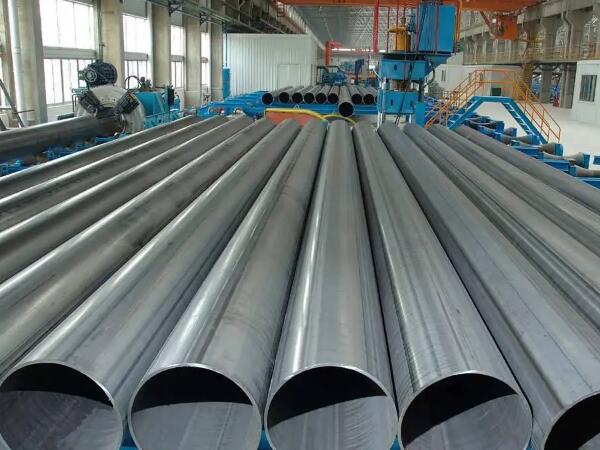Influencing Factors of ERW Steel Pipe Impact Toughness
Date:2022-05-30View:2051Tags:ERW Steel Pipe, Impact Toughness
How to improve the impact toughness of ERW steel pipe welds is a major problem in pipe making technology. In order to further improve the impact toughness of welds and meet the toughness requirements of long-distance pipelines for ERW steel pipes, it is necessary to control the quality of raw material steel coils and combine with the manufacturing process to strengthen the quality control of forming, welding and post-weld on-line heat treatment.
Characteristics of ERW steel pipe weld impact toughness:
The welding process of ERW steel pipe is to use the skin effect principle generated by high-frequency current to reheat the edge of the hot-rolled coil to a molten state, and then weld it by mechanical extrusion. The steel pipe produced by the process will have a white fusion line in the center of the weld, and the heat affected zone on both sides of the fusion line will produce metal streamlines extending from the middle to the inner and outer surfaces.

Since the ERW steel pipe uses the base metal as the welding material, the performance of its weld has a great relationship with the performance of the base metal. In common materials, the ductile-brittle transition temperature curve of the weld and the base metal. In ordinary materials, the difference in energy absorbed by the impact test between the weld and the base metal is very small; on the contrary, there is a big difference in the high toughness material, and the impact toughness of the weld is obviously inferior to that of the base metal. It can be seen that the impact toughness of the weld center of the ERW steel pipe is generally lower than the impact toughness of the base metal. Even if ductile materials are used, although the toughness of the weld is improved, the impact toughness of the weld center cannot be completely improved.
Factors affecting the impact toughness of welds:
1. Physical and chemical properties of raw materials
The ERW steel pipe uses the base metal as the welding material, so the physical and chemical properties of the raw material directly determine the physical and chemical properties of the weld.
In order to study the impact toughness of base metal and welds with different chemical compositions, the impact toughness of the base metal and the weld is affected by the change of chemical composition. In order to exclude the influence of the pipe making process on the test results, all samples were normalized.
2. The crystallinity of raw materials and non-metallic inclusions
During the welding process of ERW steel pipes, due to mechanical pressure, the heat affected zone on both sides of the weld will produce metal streamlines extending from the middle of the steel plate to the inner and outer surfaces. The direction of the metal streamlines near the center of the weld is basically the same as The fuse lines are parallel to and coincide with the fuse lines. The metal streamline is the band-like structure and inclusions extending along the rolling direction when the steel plate is hot rolled. The thickness of the metal streamline is related to the grain size of the raw material and the number of non-metallic inclusions.
The larger the grain size of raw material or the more non-metallic inclusions, the thicker and more obvious metal streamline. When there are many non-metallic inclusions and they are unevenly distributed, the base metal segregation is serious. During high-frequency welding, under the action of the extrusion force of the extrusion roller, a large number of non-metallic inclusions in the segregation zone will enter the welding fusion zone along the metal streamline, and the segregation line can be clearly seen from the low-heat acid sample meets the fusion line at an angle.
In this case, the impact toughness of the weld will be seriously reduced, and the impact absorption energy will be greatly reduced. Therefore, measures should be taken to reduce inclusions and refine grains in the smelting and rolling stages of raw material steel coils, and the rising angle of metal streamlines should also be reasonably controlled during the pipe making process.
3. Weld heat treatment conditions
Metal flow lines in welds and heat-affected zones can be eliminated by heat treatment. In order to study the difference in the impact toughness of the two kinds of welded seam specimens with and without heat treatment under the same conditions, two groups of specimens were taken respectively. Heat treated, with pronounced metal flow.
Go here if you are looking for "How to Distinguish ERW Steel Pipe and SSAW Steel Pipe?"

